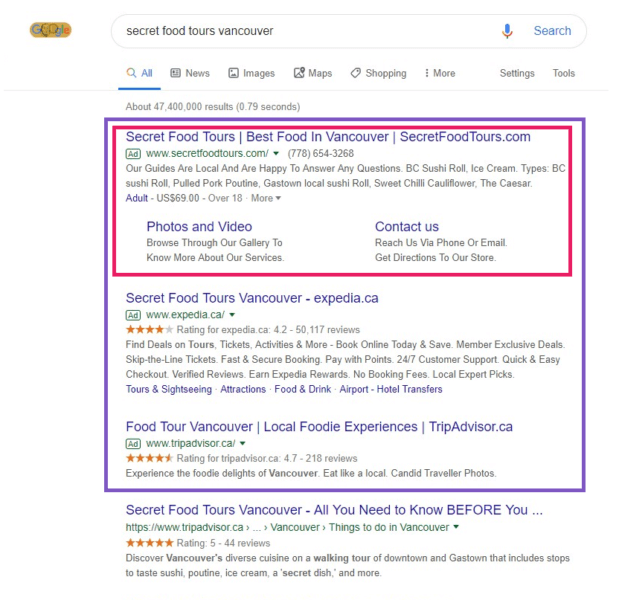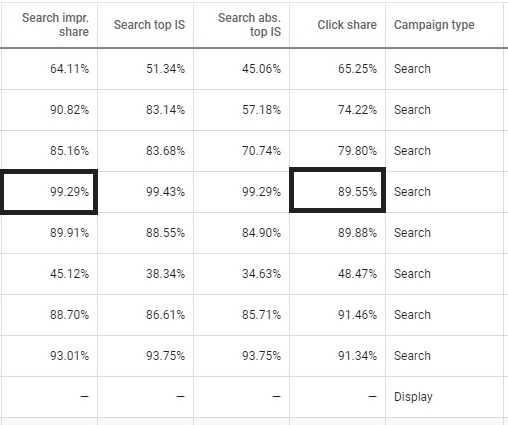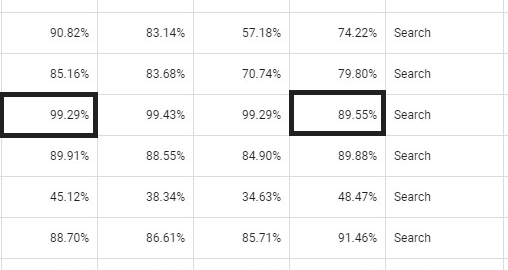Here are six metrics to help advertisers determine how often – and where in the SERPs – ads are showing up to help identify maximize growth opportunities.
Metrics to assist you in achieving growth in the Google Ads interface are constantly evolving and this can cause issues for even the most experienced of search marketers. Among the most complicated to sort out and understand are the “share” metrics. While they are excellent for identifying growth opportunities and identifying visibility gaps, figuring out which metrics to use when can be frustrating.
Let’s take a look at six of these metrics and how we can use them to identify growth opportunities within the search campaigns.
The competitive metrics
The first four metrics are competitive metrics, meaning that they represent an indicator of where your account is in relation to other accounts that you are competing against within the ad auction. This is an important distinction from the majority of metrics in your Google Ad account.
1. Search impression share
Search impression share is an old favorite. It represents the number of impressions you have received divided by the estimated number of impressions you were eligible to receive. This gives you a percentage that indicates how well your ads are performing in an ad auction. For example, a search impression share of 68% indicates that 68 times out of 100, your ad is showing on the search engine results page, also known as the SERP.
2. Search top impression share
This metric is similar to search impression share, but instead of indicating the percentage of time you are receiving any impression on the SERP, it indicates the percentage of time your ad is showing in one of the top positions, above the organic search results. The calculation for this metric is the number of times your ad is showing in the top positions versus the number of times you were eligible to receive an impression in the top position.
3. Search absolute top impression share
Following the same pattern as the above two, search absolute top impression share is the percentage of your impressions that are shown in the very first paid position. It’s calculated by taking the absolute top impressions divided by the number of times you were eligible to receive an impression in the absolute top position.

4. Click share
This is where things deviate from the norm. Click share, a relatively new metric, is the number of clicks you’ve received on the search network divided by the estimated maximum number of clicks that were possible.
If you have a click share of 68%, you received 68 out of every possible 100 clicks on your ad. This is opposed to impression share which is where your ad showed 68 out of 100 times that it was eligible to show.
Identifying growth opportunities with competitive metrics
When using the above metrics to identify growth opportunities, it is important to remember that these metrics represent your place in a larger environment. They are indicators of how well you are performing against others. That is why they are called competitive metrics (and can be found in that section when selecting columns in Google Ads).
These metrics are useful because they can help you optimize your account. There are two ways you can be losing impression share: either through low quality or a low bid. Use the additional available columns of impression share lost (budget) and impression share lost (rank) to determine what you can do to improve your impression share. If the answer is more budget and you don’t have any additional budget, consider reining in your locations. If the answer is rank, look at your quality score, ad relevancy, and landing page experience.

The addition of click share to the metrics gives us the ability to identify where there is potential for more traffic. In the example above, the campaign I’m looking at has 99.29% of the search impression share, but only 89.55% of the click share. This means that while I’m visible almost 100% of the time, I’m only capturing 89% of what Google deems to be possible in terms of actual clicks.
Using these metrics together, I’ve now identified a campaign where I have the opportunity to increase my click share to potentially capture more traffic. How will I do that? By looking at ad relevancy and copy.
The performance metrics
There are two other metrics that have the word “impression” in them that can help us identify areas of opportunity and provide even more insight into how our ads are actually doing. These metrics are Impressions (Top) % and Impressions (Abs. Top) %. Unlike the metrics above, which are indications of your ads’ placement in the larger competitive environment, these two metrics indicate the actual location of your ads, painting a clear picture of where all of your eligible ads are appearing.
5. Impressions (Top) %
Impressions (Top) % is calculated by taking the impressions that you have earned in the top positions, above the organic search results, divided by all earned impressions. The main difference between this metric and the search impression share (top) is that this is calculated through using your actual earned impressions, not the estimated impressions Google thinks you would have been capable of earning.
6. Impressions (Abs. Top) %
Similar to the above, this metric takes the impressions you have earned in the absolute #1 spot divided by all earned impressions.
Where are my ads actually appearing?
You can use the new Impr. (Top) % and Impr. (Abs. Top) % metrics to determine where your ads are actually appearing. These two metrics are not a reflection of your ads within the greater competitive environment that is the Google Ads auction, but of actual performance.
As we move towards automated strategies and even with basic rules that you can set up in your account, impression share and its variations are important metrics to keep an eye on. It is crucial to understand the differences between these six metrics and how each represents a different facet of account visibility.
All of these help us as advertisers to determine how often our ads are showing, where in the SERPs that our ads are visible, and assist in taking actions to maximize growth opportunities. While not the only metrics to look at, or even the most important, understanding these different metrics can help you optimize for growth in our account.
Opinions expressed in this article are those of the guest author and not necessarily Marketing Land. Staff authors are listed here.
Marketing Land – Internet Marketing News, Strategies & Tips
(29)
Report Post




